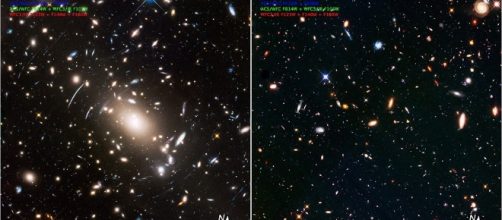In correlation with the upcoming 50th anniversary of the Tv series Star Trek, NASA´s Hubble Space Telescope (HST) has been peering deeper into space than ever before, capturing astounding images of the warping of space and time, and some of the most distant objects that have ever been observed. While the phrase, ¨Where no man has ever gone before,¨ made popular in Star Trek arouse anyone´s imagination, the most distant ever images taken by Hubble Space Telescope not only awakens imagination, but real expectations of one day being able to go farther deep into the universe.
Star Trek.
The Tv series which aired for the first time in 1966 included an introductory phrase, ¨to boldly go where no man has ever gone before, and ¨and it made reference to the original mission of the spaceship enterprise. The science fiction Tv show is set in the Milky Way in the 2060s. In the voice in the series describes the mission as a quest to explore new worlds, search for new life and civilizations. The introduction ends by stating that the mission intends to go where no man has ever gone before.
The light from the final frontier.
Even though, when the Tv series aired in 1966, the most powerful telescopes on earth could only peer into half the distance of the universe, in the present with the power and resolution of the HST, the images that we can see include some of the most distance that this telescope has ever taken.
In the latest Hubble image, which could be epitomized as that of a new frontier shows how the distant light from a number of galaxies is warped and distorted by another less distant object - the galaxy cluster Abell S1063.
Gravitational lensing.
Hubble´s great resolution allows usto observe how gravity warps space around. The enormous mass of a galaxy distorts and magnifies the distant light of other galaxies in an effect known as gravitational lensing. The effect of gravitational lensing allows the telescope to observe distant galaxies that otherwise would not be possible to observe. The warpof space allows us to observe the galaxies in their first stages of evolution, as they appeared billions of years back in time, just after the big bang.
The Frontier Fields Program.
This is an ambitious three-year endeavor that started in 2013 that combines some powerful telescopes, including HST, Spitzer Space Telescope and Chandra X-ray Observatory. The program intends to take a look at the early universe by studying large clusters of galaxies. Researching into this final frontier will allow scientists to get a deeper understanding of the distribution of ordinary and dark matter in the spaces that separate the great array of galaxies in the cluster.
The cluster of galaxies comprises 51 confirmed galaxies that together have the mass of approximately 100 million solar masses. The firstgalaxies are thought to have been formed in the early stages of the expansion of the universe, after the big bang.

